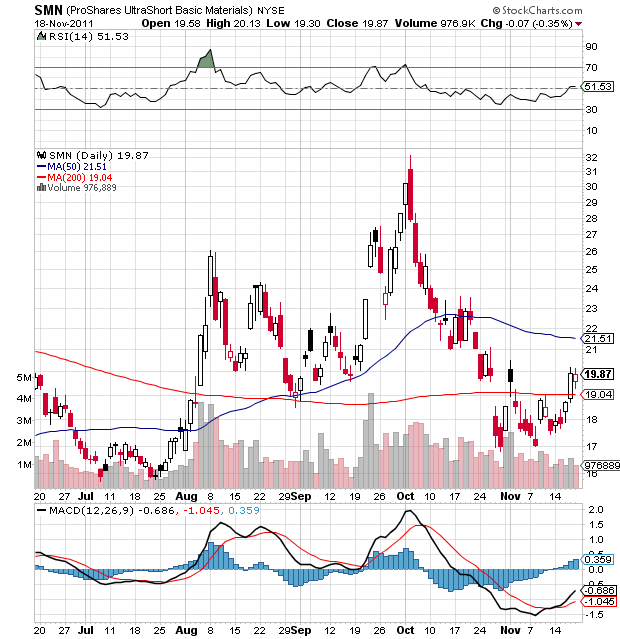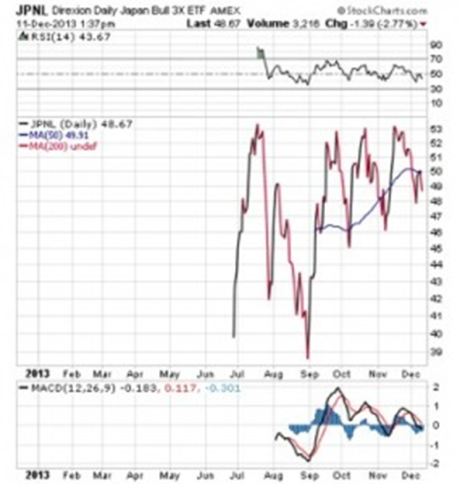Sector ETFs In A Down Market
Post on: 30 Март, 2015 No Comment

Figures don’t lie, but liars figure! Ever heard that one?
The figures may not lie, but they can often deceive. Usually when that happens we are too quick to impart to them attributes they may not have. Or we may ignore characteristics that lie hidden without thoughtful examination.
Right now a comparison of market-maker [MM] price change expectations for ETFs that track major investment sector indexes offers an illustration where are hiding, separately, both an odds-on major profit opportunity, and the intriguing potential for a profit trap. Here is a comparison of two dozen such ETFs after Friday’s market hiccup, in terms of their upside price prospects in tradeoff against their downside risk exposures.
(used with permission)
This is a simple mapping of each ETF’s downside price change prospect on the vertical scale against their upside price change prospect on the horizontal scale. The numbered intersections are identified by ticker symbols in the blue field at right. Multiple instances are treated as at points [6], [8], and [9]. The forecasts are derived from the self-protective hedging actions by market-makers taken on Friday to avoid losses as they had to put firm capital at risk in helping big-money-fund clients adjust their portfolio holdings.
Locations above the diagonal dotted line indicate larger downside potentials than upside. Ten of the plotted ETFs are either at or above that balance. At best their investment outlook to the market-making professionals is a coin-flip, with no reward for risk taken. Making up almost half of the subjects, this paints a less-than-encouraging near-future for stock prices, compared to the start of the year.
The ETFs at [1] and [2] have forecast price ranges whose lowest points are (trivially) higher than their Friday closing market quotes. We will be most interested in them. They are iShares US Basic Materials (NYSEARCA:IYM ) and iShares US Financials (NYSEARCA:IYF ).
Here is how the MMs appraised IYM on each market day of the last 6 months.
Friday’s depressed market took IYM’s price (the heavy dot in the most far right vertical line) down further than its price range expectations. Our Range Index, which measures that proportion of the forecast range lying below the current price of $77.30, is a pathological -4. It can happen, but typically not often. In the case of IYM it has happened only 5 times in the 1261 market days of the last 5 years.
The red flagging of that part of the data table below the blue-background price forecasts history picture seeks to warn us that such a small sample may not have statistical significance. It may also appear when the number of days past history that the sample is drawn from is less than 3 years, or 756 days.
In this case the small sample size warning needs a more complete context, which will come later. But for now here is how the remainder of those 1261 days was appraised by MMs, in Range Index terms:
It appears to be a fairly normal set of appraisals, where we are now at the low extreme. But does the extreme appraisal make it a good bet for investment at this price, at this time? The rest of that data table line containing the red warning has helpful information for comparative purposes. It starts by restating the specific prices involved in the forecast, and then measures the upside potential of +4.9% from the Price Now to the Range Forecast High of $81.74.
To test the effectiveness of this and prior such forecasts we use the Range High as a sell target when first reached, and if not achieved in 3 months from the forecast date the price at that time is taken as the closeout sale price. Looking at all prior 5 similar Range Index instances we seek the lowest day’s closing price below a presumed cost of the price at the end of the market day following the forecast. All of those worst-case drawdowns are averaged, in this case -3.6%.
The Range Index has already been explained. Win Odds are the percent of the sample of prior like RIs that either reached their sell targets or were at a profit 63 market days later. Here 4 out of 5 met that test, equivalent to 80% or 80 of 100, had the sample been that large. But we know it wasn’t. Context again.
How profitable were those priors, including the one loser? The % payoff tells us that the (geometric) mean gain was 8.5%. Since the average number of market days to closeout was 36, the annual rate of return, properly computed, was +78%. Again, these are numbers that are helpful in making comparisons, not promises of future gains or rates of wealth accumulation. There is no guarantee they will recur, but their past presence can help make choices between alternative capital investments.
Now let’s take a look at IYF, the closest comparable alternative from the set of sector-tracking ETFs.
Following the previous description for IYM, Friday’s market price experience was similar, but it followed a previous day of serious decline, compounded by the then prior day of enthusiasm in both price and expectations. Like in the case of IYM, IYF was left at a price going into the weekend below its forecast range, $77.81 compared to 77.98.
IYF’s upside prospect of +5.5% is a bit larger than IYM’s +4.9. But its perfect drawdown measure of 0.0% is only a reflection that in the past 5 years IYF has never been seen by MMs as being this cheap. That makes it easy to say that there have been no bad experiences. But no good ones either. All % payoffs average +0.0% and take no time to achieve. Here’s the context of what else was being seen in those same 5 years:
This is a neat, compact array of MM valuations with very few outliers. Today’s may be rare, but does not appear incongruous. Still, it is not imaginary, and should be considered.
How to do this? Our approach is to look at the entire array of Range Indexes over the past few years and see how prices actually changed following each level of upside-to-downside forecast balance, or any more extreme. Here is what that produces, first for IYM:
This table shows at its center light blue row the average annual rate of price change for IYM in all periods of from 5 to 80 market days as indicated by the yellow column footers. They were calculated from every starting day possible in the last 4 years, so these average rates contained all the Range Indexes in that period, 1133 of them.
The row above that center row calculated the price change rates for all those Range Indexes where there was at least 2 times as much upside as downside, or Range Indexes of 33 or less. The row below the center included the opposite, where there was twice as much downside as upside, or Range Indexes of 67 or more.
The rest of the table progresses in the same manner, with row calculations containing progressively fewer Range Index instances out to the extremes of zero or negative RIs at the table’s top and RIs of 100 or more at the bottom. The #Buys column indicates how many such experiences were included in each row.
So in the row green-marked 10:1 there were 92 cases of RIs no larger than 9 and their average price change in the 20 market days after each of those forecast days was a gain at an annual rate of +72%. Now let’s skip up to the top row where the magenta 22 indicates the row containing the current RI averages. There, in the 65-day column (3 months+) average gains are at an annual rate of +49%, nearly 5 times IYM’s average daily rate for a period that long.

Rather clearly the table for IYM shows progressively better rates of price gains as the reward-to-risk forecasts improve (or as RIs decline). Now let’s see if the same conditions are present for IYF.
Wow! This looks even better. Much higher annual rates at the check points used for IYM. At 10:1 reward to risk, 20 days, IYF shows +115% compared to IYM’s 72%, and up in the top row at 65 days held, it’s 81% instead of 49%.
But hold on a minute — or more. Are liars figuring here? There are only 3 instances of IYF Range Indexes at zero or negative. Friday’s -4 RI was the first and the RI distribution picture showed it to be the most extreme. So those numbers may not be all that reliable, compared to the IYM average from 22 prior RIs.
Statisticians have several ways to test the likelihood that such observations are likely to be repeated in the future, which is what we need to have a sense of. Their favorite for situations like this is called the t-Statistic test. It looks at the irregularity of the population from which the sample is taken, and of the sample itself and offers a measure of whether the two are really different, or whether there may be a strong likelihood that any difference we see from the overall population average might just be a matter of chance.
Here are the t-Statistic results for IYM, followed by IYF’s measures. In this contest, bigger numbers are better. We use colors to emphasize that. Red numbers represent a near certainty that results from that combination of Range Index and holding period are not just a matter of accident or chance.
The weakness of the IYF proposition shows up at a glance here. The statistical significance of the IYM price changes at lower Range Indexes, like the 10. 1 level, is meaningful even at only 20 days holding, and gains strength on the way out to 65 days. IYF’s results at 10. 1 do not achieve significance at any holding length.
IYM’s t-statistics at its Friday Range Index level are encouraging, but not compelling in the way we sometimes see a few other ETFs, like UDOW and SVXY. Here is UDOW.
This presents a strong indication that MMs repeatedly have provided reliable impressions of future price changes for UDOW, in both up and down (negative t-statistics) directions.
Conclusion:
The choice of IYM as an investment emphasis here is clearly favored over IYF, and the other pictured sector ETFs. But additional and more advantageous buying opportunities may well be presented with further market weakness, so keep some powder dry.
Disclosure: I have no positions in any stocks mentioned, and no plans to initiate any positions within the next 72 hours. I wrote this article myself, and it expresses my own opinions. I am not receiving compensation for it (other than from Seeking Alpha). I have no business relationship with any company whose stock is mentioned in this article.














